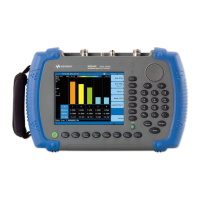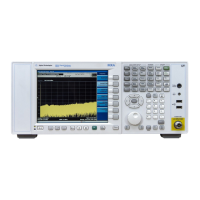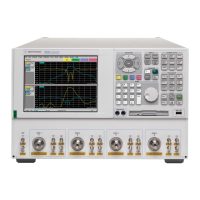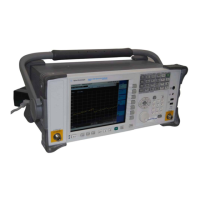Functions and Measurements 3
N9342C/43C/44C User’s Guide 77
Calibrate with a T-combo calibrator
Using a T- combo calibrator is a three step process
requiring the user to manually change the
open- short- load components. The default order of
the calibration process is open- short- load.
1 Press [Freq] > {Calibrate} to bring up the dialog
box for calibration instruction. Follow the
on- screen instruction to connect the Open
component of the T- combo calibrator to the RF
OUT connector of the analyzer. Press [ENTER] to
start the open calibration.
2 Follow the instruction to connect the short
component of the T- combo calibrator to the RF
OUT connector of the tester. Press [ENTER] to
start the short calibration.
3 Connect the Load component of the T- combo
calibrator to the RF OUT connector of the tester.
Press [ENTER] to start the load calibration.
A Calibrated indicator is shown on the upper left
corner of the screen when the calibration is
completed. Then, the analyzer is ready for your
further cable measurement.
Measuring Cable Reflection
Press [Mode] > {Cable&Antenna Test} > {Reflection
Measurement} to select the Reflection Measurement
Mode. It allows you to set the Y axis of the
graticule as return loss, VSWR or reflection
coefficient value. For further information on
reflection measurement, please refer to “Making a
Reflection Calibration" on page 53.
Measuring Distance to Fault
For this measurement, an internally generated
signal emits from the RF OUT port of the tester
and is transmitted to the cable and antenna system
(DUT). The tester receives and processes the signal
power reflected from faults and imperfections. In
performing a DTF measurement, the tester uses

